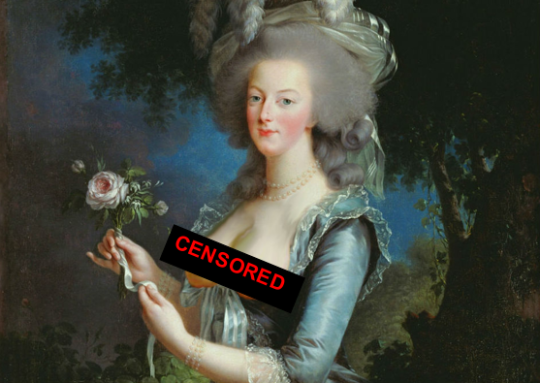
What most people think they know about Marie Antoinette could fill volumes. She is best remembered as the feather-brained, original mean girl who said, “Let them eat cake,” (she didn’t). Her breasts were allegedly so beauteous, they were the model for the champagne coupe (invented over 100 years before her birth). Her lust for a diamond necklace is said to have toppled a throne (actually, she disliked such flashy jewelry).
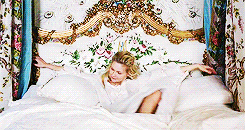
Her profligacy is so legendary that, over two centuries later, her name is synonymous with such callous elitism; her image, even now, often appropriated in satire of contemporary public figures.
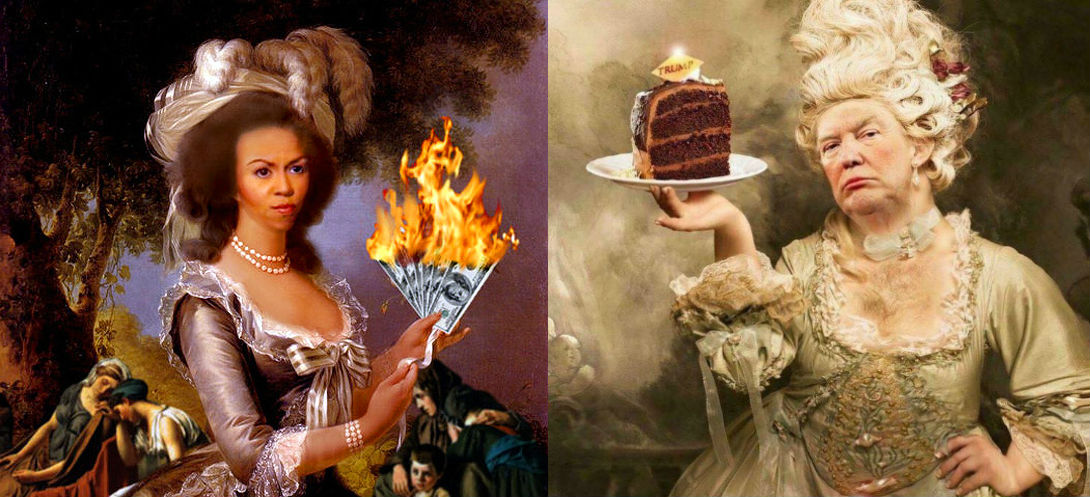
Modern-day political propaganda mirrors the eighteenth-century libels against Antoinette.
Our own Thomas Jefferson blamed her excesses almost single-handedly for the French Revolution (though she generally got on famously with the American founders, but more on that in a moment). In fact, Her personal spending, great as it was, made up a mere drop in the sea of the national debt; not as high as that of other (male) members of the royal household. And while her popular misnomer as “The Last Queen of France” makes a catchy subtitle for biographies, six other queens came after her, including her only surviving child, who was technically queen for 20 minutes. In short, what many regard as truth about her is largely fiction, and as usual, the truth is stranger.
1. John and Abigail Adams were big fans.
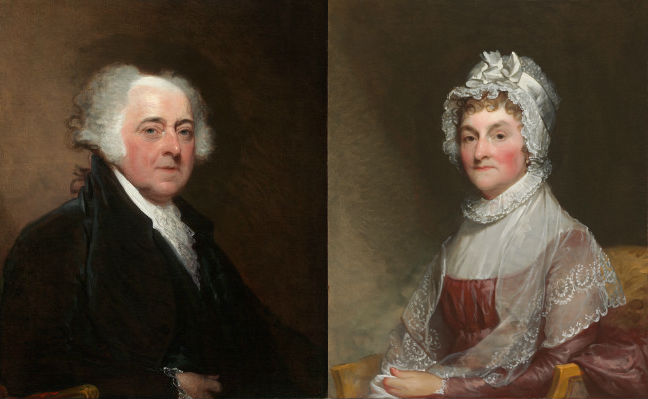
John Adams and Abigail Smith Adams by Gilbert Stuart, in the National Gallery of Art.
It’s hard to imagine the punctilious Adamses of Massachusetts taking a liking to a woman notorious for her imprudent, spendthrift behavior. Nevertheless, John Adams, who met Antoinette when he was a diplomat to France during the American Revolution, wrote of her, “She was an object too sublime and beautiful for my dull pen to describe.” Even Abigail, who generally disdained the immodest dress and manners of the aristocratic French women, shared her husband’s unlikely soft spot for the ill-fated queen. She commented on Antoinette’s gory execution, “Not content with loading her with ignominy, they blacken her memory.” Abigail evidently understood better than Thomas Jefferson that Antoinette was falsely maligned by misogynist, tabloid journalism.
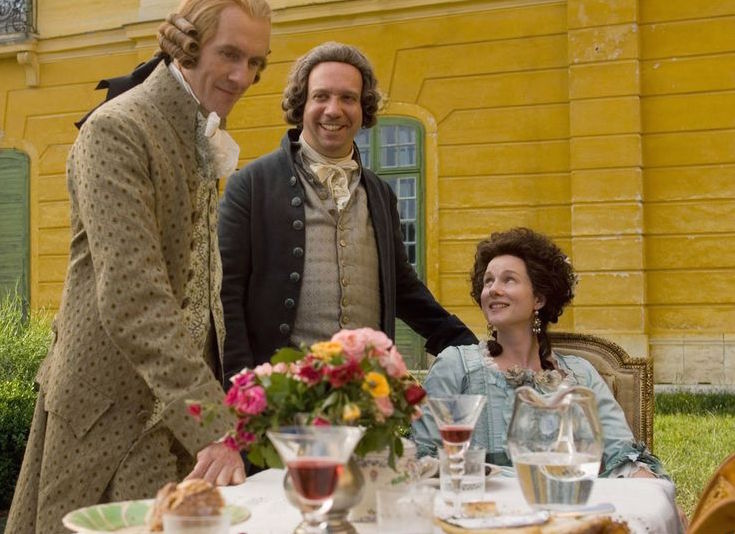
Jefferson, John, and Abigail Adams enjoying la vie en rose in Paris, as portrayed in HBO’s John Adams (2008). It was around this time that all three were acquainted with Marie Antoinette, the Adamses becoming her admirers.
2. She almost immigrated to America.
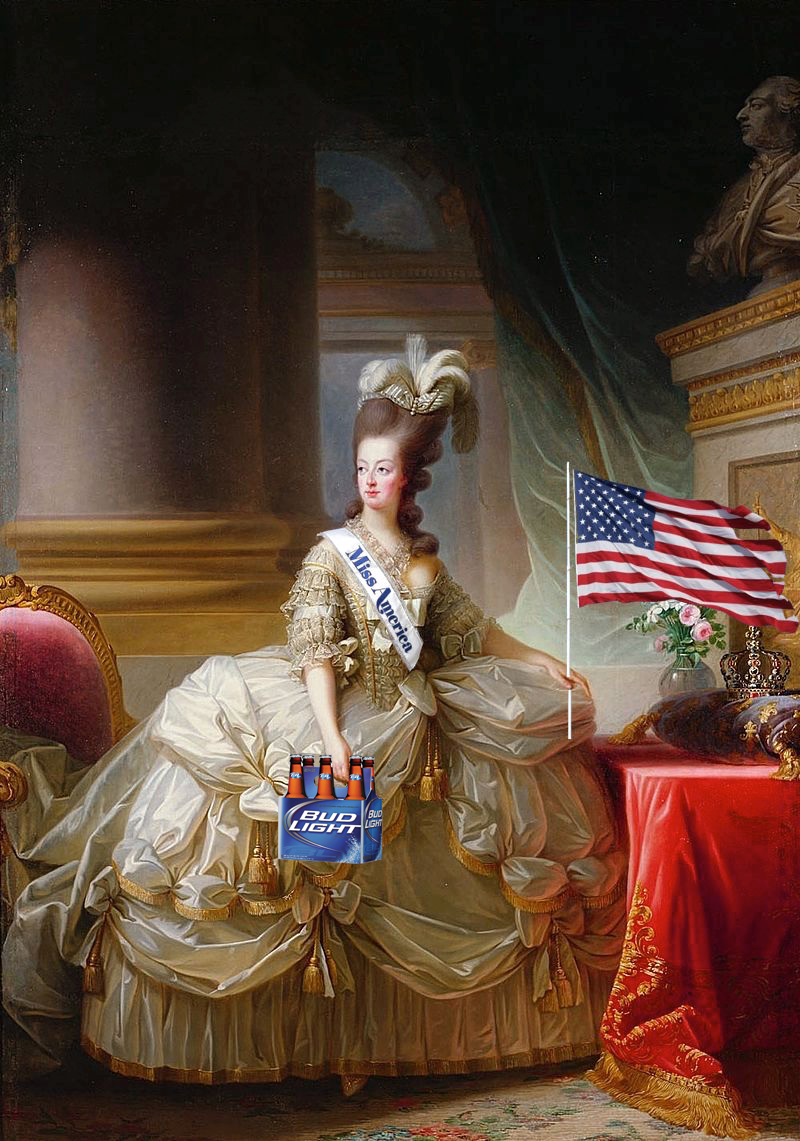
Adapted from Marie Antoinette in Court Dress by Elisabeth Louise Vigee Le Brun, in the Museum of Art History Vienna.
John and Abigail Adams were not unique in their sympathy for Marie Antoinette. Many Americans, grateful to King Louis XVI for his support of the American Revolution, advocated his widow’s exile to the new Republic. The aristocratic refugee colony of French Azilum in rural Pennsylvania featured an enormous cabin called La Grande Maison, supposedly a makeshift “palace” for the Queen and her children.
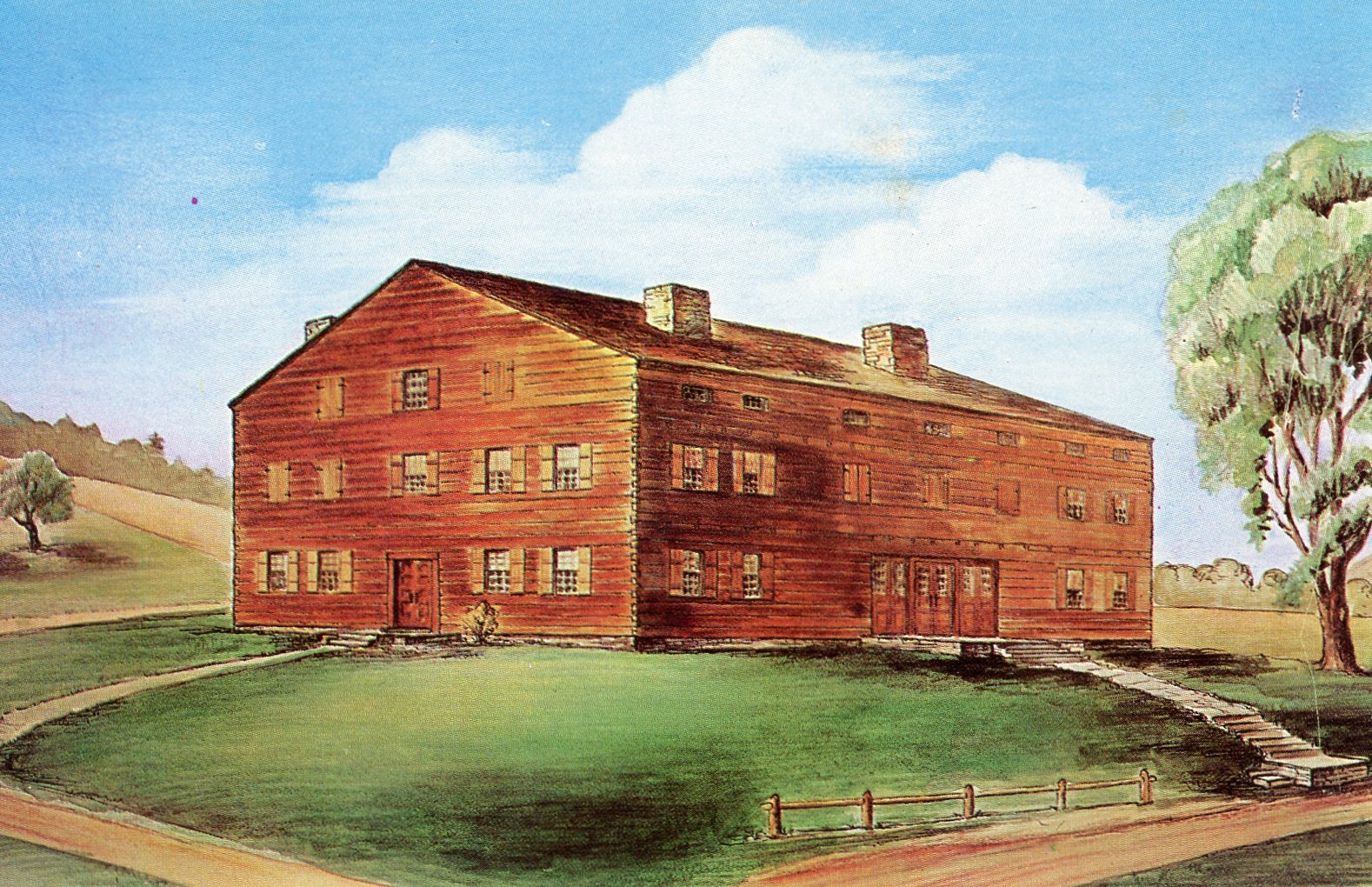
La Grande Maison of French Azilum, Pennsylvania: hypothetical home of Marie Antoinette.
A rather swashbuckling scheme had her escaping to a home in Maine aboard the trade ship Sally. The Sally returned to Maine from France laden with luxury furniture (and allegedly, the Queen’s cats) to outfit the humble country house for a new American princess who would never arrive. Legend claims Antoinette’s pet cats were the forebears of a popular local breed. A mystery writer now lives in the unassuming cottage that almost housed a great queen and her feline friends, which sounds like the plot of an epic Stephen King ghost story waiting to happen!
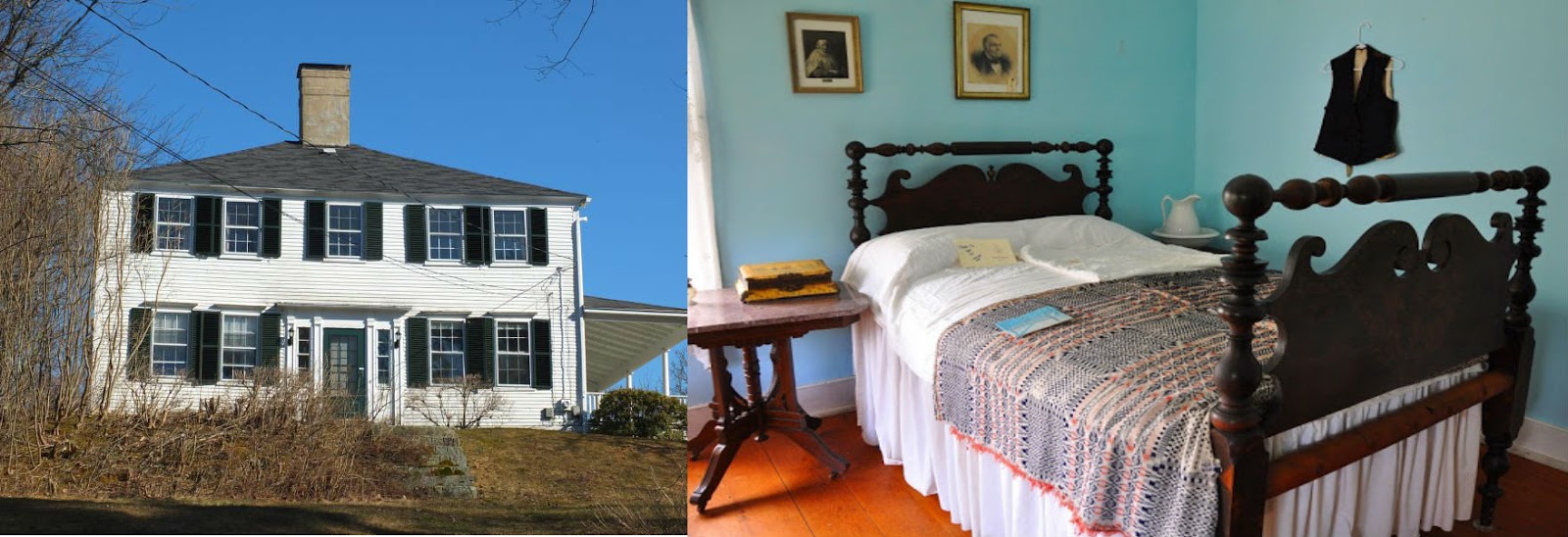
“Marie Antoinette House,” in Edgecomb, Maine (left). Interior of the LaPorte house near French Azilum (right): not exactly Versailles, but gives an idea of the elegant touches the refugee nobility brought to their reduced circumstances in the US.
If the American plotters had succeeded, would modern day Bourbon princesses be the darlings of our tabloids instead of our pseudo-aristocracy of Kardashians and Trumps? A person can dream!
3. Let them eat...curry?
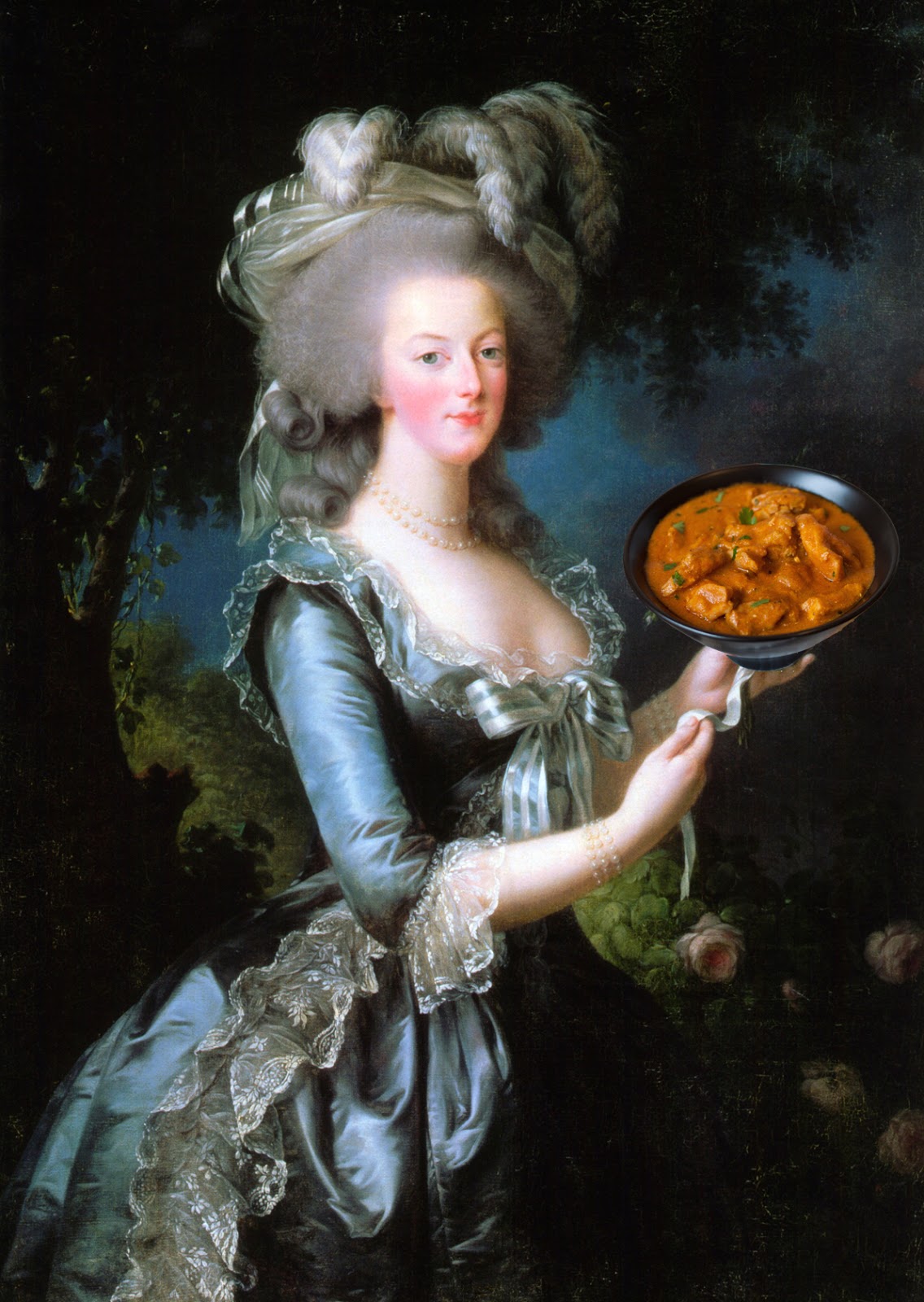
Adapted from Marie-Antoinette with the Rose by Vigee Le Brun, in the Palace of Versailles.
Marie Antoinette never said “Let them eat cake,” but she may have been one of the first people in the West to eat Indian food. In 1788, the Tipu Sultan of India sent ambassadors to Versailles on a mission to form an alliance against the British.
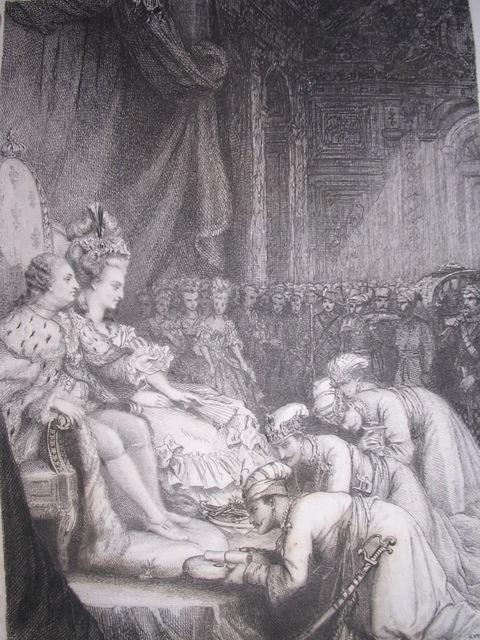
Louis XVI and Marie Antoinette receive the Indian Ambassadors.
They brought an entourage of over 30 people, hosting exotic entertainments such as hookah parties and suppers. Notably, the Queen’s official portraitist, Vigee Le Brun, painted two of the ambassadors and accepted their invitation to dinner. The custom of sitting on the floor and serving curries with bare hands shocked the artist, who wrote in her memoirs, “I’m sorry to say we had a miserable time.” Even so, the foreign cuisine fascinated the French court, and crowds flocked to the palace kitchens to watch the visitors’ food prepared. Antoinette did indeed try it, but found the spice overwhelming.
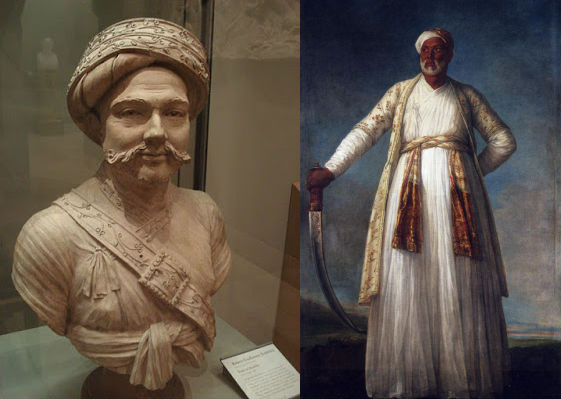
Bust of The Ambassador Mohammed Osman Khan by Claude-Andre Deseine, in the Louvre Museum (left). Portrait of Mohammed Dervish Khan by Vigee Le Brun, in a private collection (right).
4. She was friends (avec benefits?) with Princess Diana’s great-great-great-great-aunt.
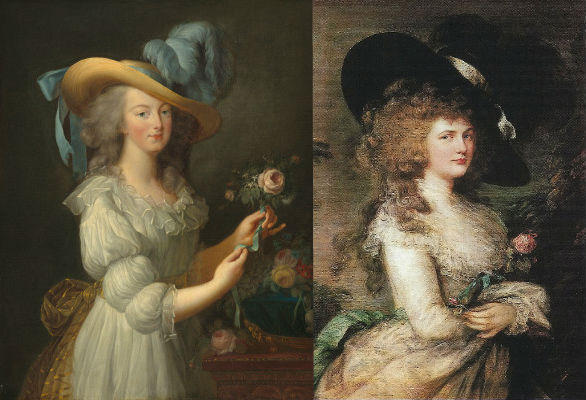
Marie-Antoinette after Vigee Le Brun, in the National Gallery of Art (left). Portrait of Georgiana, Duchess of Devonshire by Thomas Gainsborough, in Chatsworth House (right): Parallel portraits reflect their parallel lives.
Georgiana, Duchess of Devonshire (Princess Di’s ancestor), and Marie Antoinette had much in common. Both had passionless marriages, and filled the void with hard partying, high fashion, gambling addiction, and intense romantic friendships with other women; Georgiana in a menage a trois with her own companion and her husband’s mistress, Lady Elizabeth Foster; and Antoinette with her best friend and reputed lesbian lover, The Duchess de Polignac. When Georgiana visited Versailles, she, Antoinette, and Polignac became inseparable friends, exchanging favors and locks of hair. Polignac even moved in with Georgiana in England after a falling out with Antoinette, which did nothing to quell gay polyamory rumors surrounding this gleesome threesome.
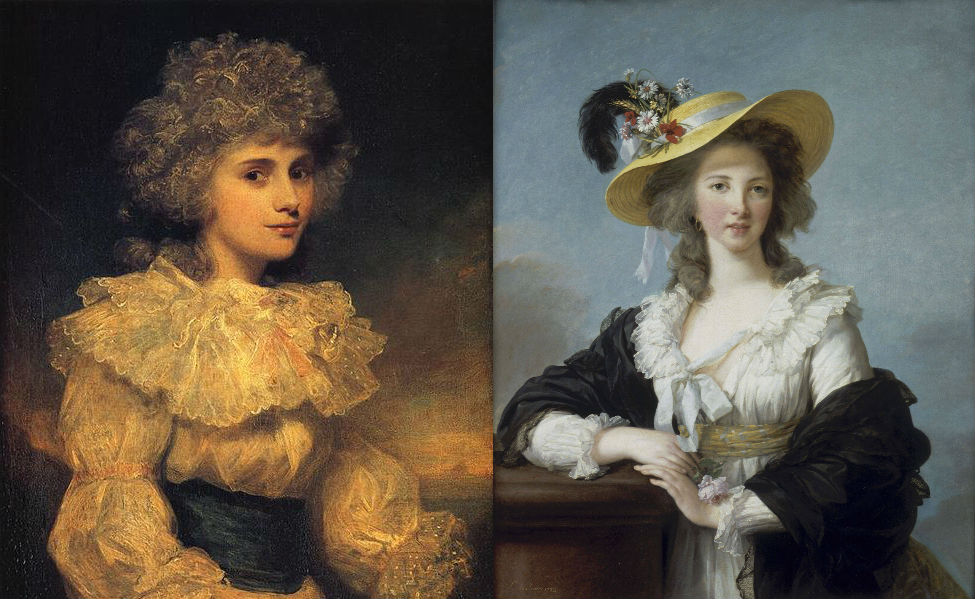
The “other women” in their lives: Portrait of Lady Elizabeth Foster by Joshua Reynolds, in Chatsworth House (left). Duchess de Polignac by Vigée Le Brun, in Versailles (right).
Antoinette’s dynamic with Polignac played out memorably in Sofia Coppola’s Marie Antoinette (2006), with Kirsten Dunst and Rose Byrne. Georgiana's uncannily similar life was the subject of The Duchess (2008), starring Keira Knightley. Too bad neither film included their friendship with each other, because that would be one crossover movie we’d like to see!
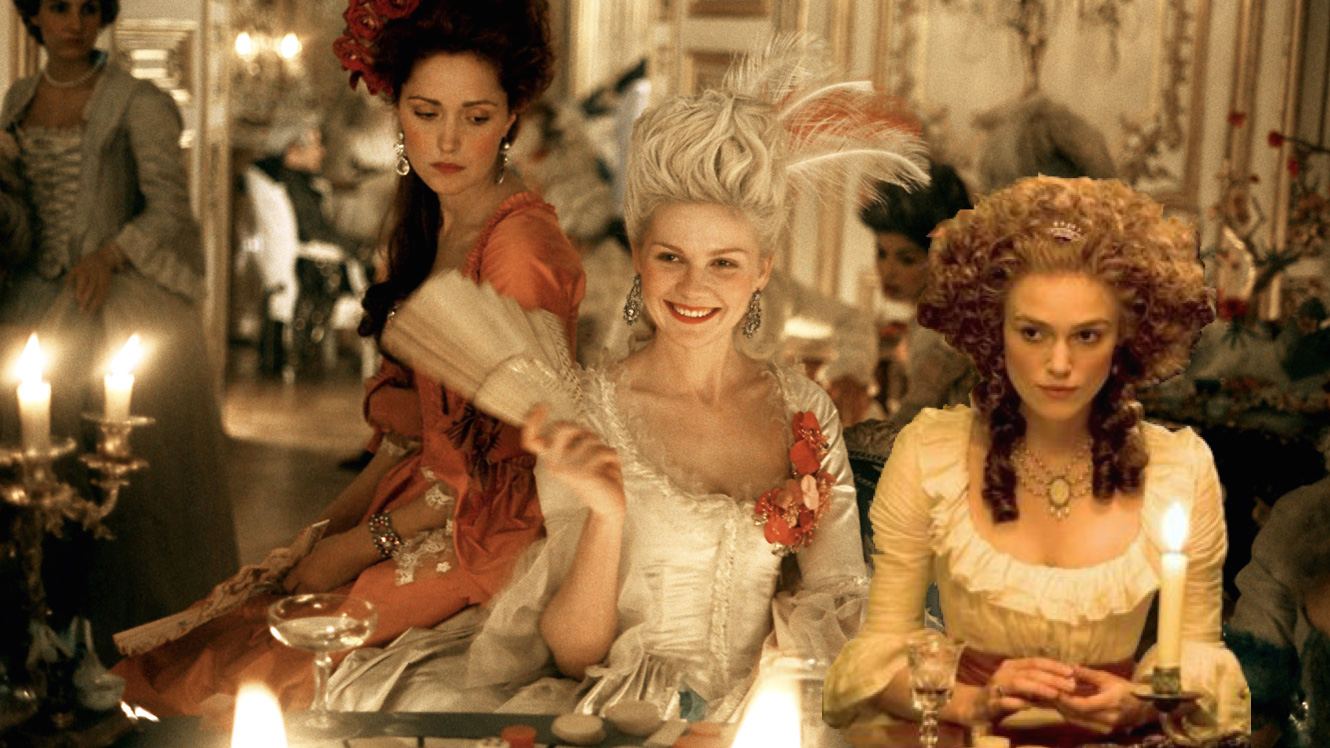
Marie Antoinette/The Duchess fantasy mash-up.
5. She starred in porn with the Marquis de Lafayette.
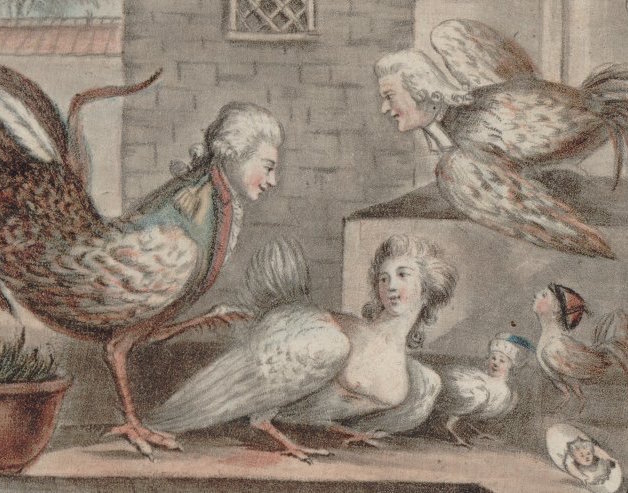
This PG-version of the erotic pamphlets targeting Lafayette and the Queen depicts him as the virile cock, and she as the fertile hen. Most other examples are definitely NSFW.
The dashing young hero of the American Revolutionary War (and character in Hamilton) was rumored to be Marie Antoinette’s lover, slandered in pornographic pamphlets depicting them in an imaginative array of compromising positions. This is especially ironic considering Lafayette and Antoinette were, at best, frenemies rather than friends, let alone lovers. Antoinette had once humiliated Lafayette by mocking his clumsy dance moves at a court ball. Conversely, she later showed him kindness by personally escorting his wife to greet him upon his return from America, and throwing a lavish reception in his honor.
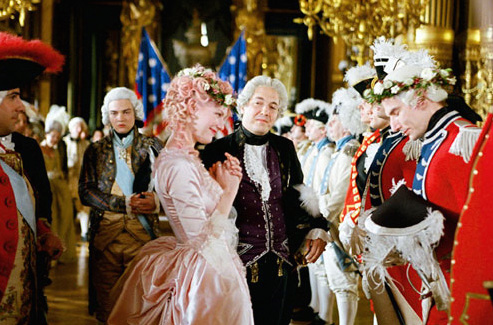
Marie Antoinette (Kirsten Dunst) gives Lafayette a hero’s welcome.
Antoinette distrusted Lafayette, whom she suspected (rightly) of sympathizing with the French Revolution. However, despite his liberal political leanings, the Marquis remained steadfast in his service of the Royal Family until the bitter end. None other than Georgiana, Duchess of Devonshire, made him swear to defend their mutual friend. He showed his greatest valour on the night enraged fishwives marched on Versailles calling for Antoinette’s entrails. When the mob demanded to see the Queen, Lafayette accompanied her onto the balcony and bowed to kiss her hand. This display of gallantry temporarily pacified the crowd, and even moved some to shout “Vive la Reine!” (Long live the Queen). Nonetheless, Antoinette remarked, “Lafayette is here to defend us, but who is to defend us against Lafayette.” A simple, “Thank you for saving my royal butt,” would have sufficed.
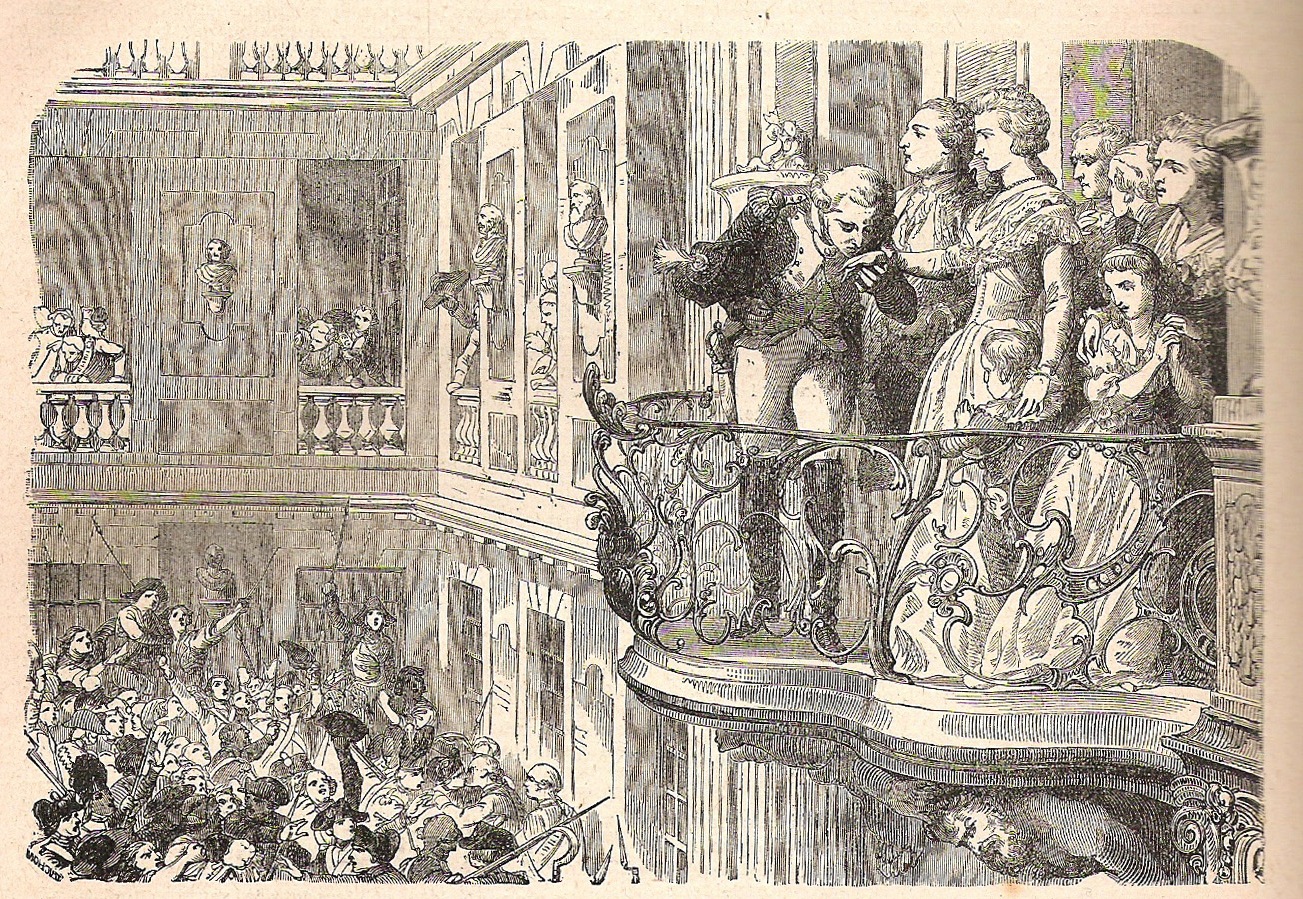
Lafayette bows to kiss the Queen’s hand before the mob.
Marie Antoinette’s public image has scarcely softened since the people of France, fueled by literal “fake news,” demanded she pay for her crimes in blood. Like all people whose lives are elevated to legend, what is fabricated endures long after her death, while the truth fades into obscurity. Her infamy is resurging in the era of viral memes, from a parody of Michelle Obama saying, “Let them eat Kale,” to Louise (#HermesScarf) Linton deplaning from an expensive getaway as Marie Antoinette in sunglasses.
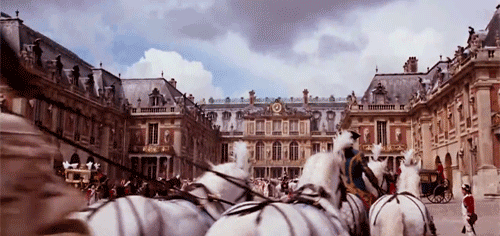
In the age of reality TV politics and hurricane heels, the opportunities to exploit her image are as endless as they are tempting. Yet the very fact that Marie Antoinette is still so relevant for something she never said speaks to the perils of the temptation, and the necessity of avoiding it. If recent history has taught us anything, it’s that you can’t make this stuff up...so why try? The truth is infinitely more rewarding.
By: Griff Stecyk









Comments (2)
I am very impressed with the information presented in this article, but the sources are missing.